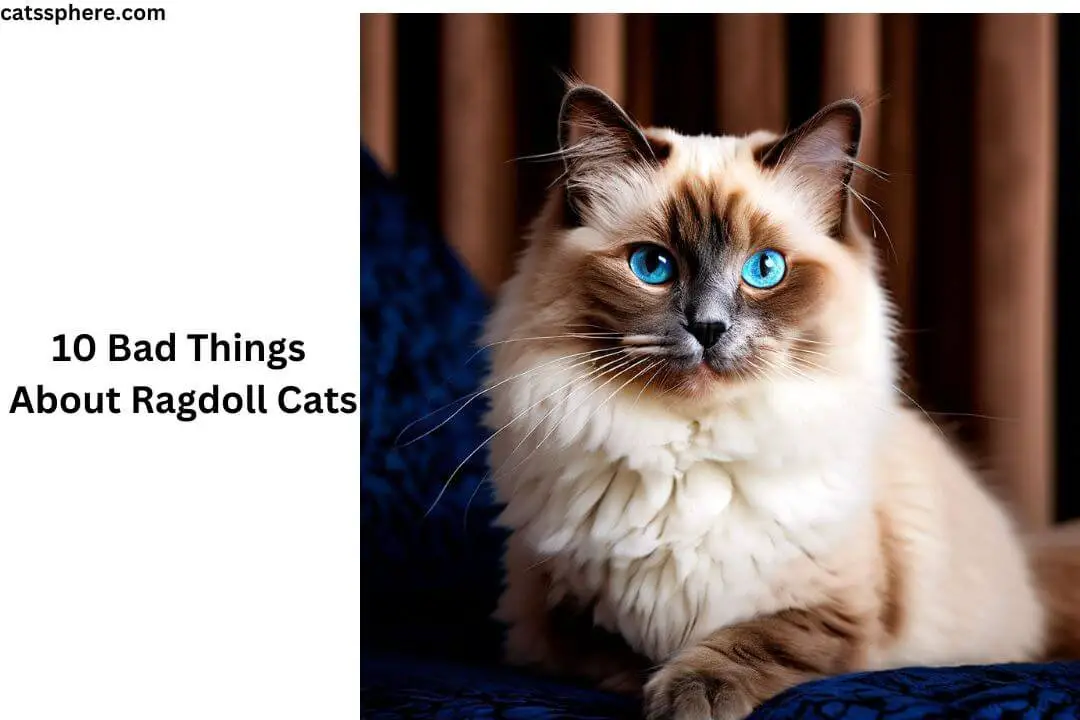Ragdoll cats are adored for their affectionate nature and striking blue eyes, making them a popular choice among cat lovers. However, owning a Ragdoll cat isn’t all sunshine and rainbows. While their loving demeanor and captivating appearance are appealing, there are several bad things about Ragdoll cats that potential owners should consider.
Let’s dive into these bad things about Ragdoll cats to give you a comprehensive understanding of what it truly means to share your life with a Ragdoll cat.
25 Bad Things About Ragdoll Cats
| No. | Bad Things About Ragdoll Cats |
|---|---|
| 1 | High grooming needs due to their long fur |
| 2 | Prone to shedding, requiring frequent cleaning |
| 3 | Can be prone to obesity without proper diet |
| 4 | Susceptible to certain genetic diseases |
| 5 | Require significant attention and companionship |
| 6 | Expensive to purchase from breeders |
| 7 | Regular vet visits needed for health checks |
| 8 | Can be prone to urinary tract issues |
| 9 | May develop dental problems |
| 10 | Indoor lifestyle required for safety |
| 11 | Can suffer from separation anxiety |
| 12 | Slow to mature, requiring extended kitten care |
| 13 | Potential for food allergies |
| 14 | Not hypoallergenic, can cause allergies |
| 15 | Large size may not be suitable for small spaces |
| 16 | Can be vocal, requiring patience |
| 17 | Risk of heart disease such as HCM |
| 18 | Can be prone to gastrointestinal issues |
| 19 | May have a strong prey drive despite docility |
| 20 | Need for interactive toys to prevent boredom |
| 21 | Can be expensive to insure due to health risks |
| 22 | Requires consistent litter box maintenance |
| 23 | Not always compatible with other pets |
| 24 | Can be prone to heat sensitivity |
| 25 | Potential for behavior issues if not socialized |
What Are Ragdoll Cats?
History and Origin
Ragdoll cats, known for their placid temperament and striking blue eyes, were first bred in the 1960s by Ann Baker in Riverside, California. These cats were specifically developed for their docile and affectionate nature, making them ideal companions for those seeking a calm and friendly pet.
Physical Characteristics
Ragdolls are large, muscular cats with semi-longhair coats that come in various colors and patterns. Their soft, plush fur and striking blue eyes make them visually appealing, but these physical traits also come with a set of challenges that potential owners should be aware of.
Health Issues
Common Genetic Disorders
Ragdoll cats are prone to several genetic disorders. One of the most common is hypertrophic cardiomyopathy (HCM), a heart condition that can lead to heart failure. Regular check-ups and screenings are essential to catch this condition early.
Heart Problems
Heart issues, including HCM, are prevalent in Ragdolls. These can lead to a shortened lifespan and require ongoing veterinary care. Symptoms such as lethargy, rapid breathing, and a decreased appetite should be addressed immediately by a vet.
Dental Issues
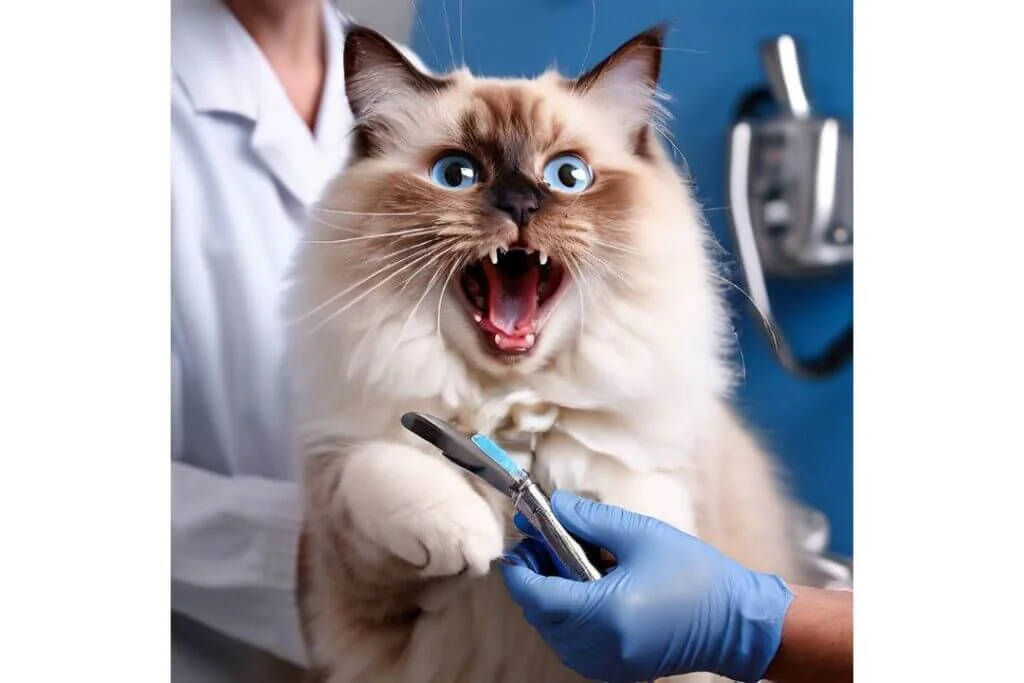
Dental health can be a significant concern for Ragdolls. They are prone to gingivitis and periodontal disease, necessitating regular dental check-ups and cleanings. Poor dental hygiene can lead to more severe health problems if left untreated.
High Maintenance Needs
Grooming Requirements
Ragdolls have a semi-longhair coat that requires regular grooming to prevent matting and tangles. Daily brushing is often recommended to keep their fur in good condition and to reduce shedding around the house.
Feeding Needs
Their dietary needs are specific, requiring high-quality cat food to maintain their health. Overfeeding can lead to obesity, so portion control is crucial. Regular feeding schedules and a balanced diet are necessary to keep them healthy.
Regular Vet Visits
Due to their susceptibility to various health issues, Ragdolls need regular vet visits. Annual check-ups, vaccinations, and health screenings are vital to ensure they remain in good health. This can be time-consuming and costly.
Behavioral Problems
Dependency on Humans
Ragdolls are known for their dependency on human interaction. They thrive on companionship and can become depressed or anxious when left alone for long periods. This makes them unsuitable for owners who are frequently away from home.
Potential for Separation Anxiety
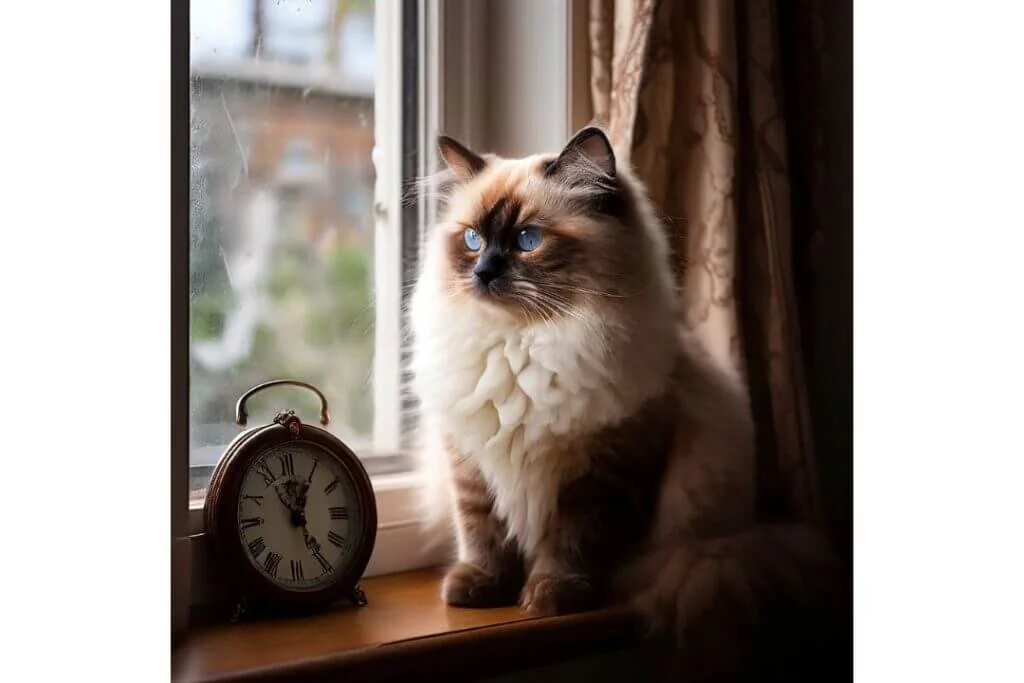
Because of their strong attachment to their owners, Ragdolls can suffer from separation anxiety. This can manifest in destructive behaviors, excessive vocalization, and even health problems. Providing enough mental stimulation and companionship is essential.
Lack of Street Smarts
Ragdolls lack the street smarts of other cat breeds. Their trusting and docile nature makes them vulnerable if allowed to roam outside. They are best kept as indoor cats to protect them from potential dangers.
Cost Considerations
Initial Purchase Price
Ragdoll cats can be quite expensive to purchase, often costing several hundred to over a thousand dollars depending on their pedigree. This initial cost can be a barrier for some prospective owners.
Ongoing Expenses
In addition to the initial purchase price, Ragdolls come with ongoing expenses such as food, grooming supplies, veterinary care, and insurance. These costs can add up over the lifespan of the cat, making them a significant financial commitment.
Space Requirements
Need for Ample Space
Ragdolls are large cats that need plenty of space to move around. They are not well-suited to small apartments or cramped living conditions. Providing ample space for them to explore and play is essential for their well-being.
Unsuitability for Small Apartments
Their size and active nature mean they may struggle in small living spaces. They need room to roam and play, so a larger living area is preferable for their physical and mental health.
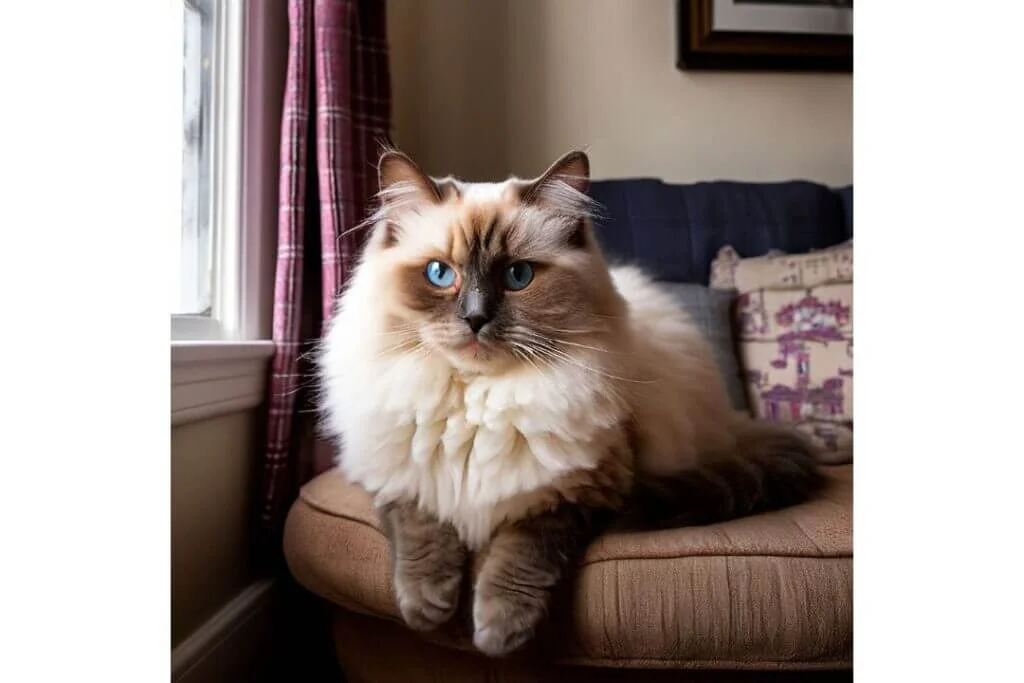
Shedding and Allergies
Shedding Patterns
Ragdolls shed throughout the year, with more significant shedding during seasonal changes. Regular grooming can help manage the amount of fur they shed, but potential owners should be prepared for a certain level of shedding.
Allergic Reactions
While no cat is truly hypoallergenic, Ragdolls can cause allergic reactions in sensitive individuals. Their dander and fur can trigger allergies, making them less suitable for people with severe cat allergies.
Dietary Needs
Special Dietary Considerations
Ragdolls have specific dietary needs that must be met to keep them healthy. High-quality, protein-rich cat food is essential, and overfeeding should be avoided to prevent obesity.
Susceptibility to Obesity
Due to their laid-back nature, Ragdolls are prone to obesity if not properly managed. Regular exercise and a balanced diet are crucial to keeping them at a healthy weight.
Training Challenges
Difficulty in Training
Ragdolls can be challenging to train. Their laid-back nature means they may not respond well to traditional training methods. Positive reinforcement and patience are key to successfully training a Ragdoll.
Litter Box Issues
Some Ragdolls may have issues with using the litter box consistently. This can be due to medical problems, stress, or dislike of the litter type. Ensuring a clean and comfortable litter box environment is essential.
Ragamuffin vs Ragdoll: A Detailed Comparison
Are Ragdoll Cats Cuddly? Discover Their Affectionate Nature
Socialization Needs
Interaction with Other Pets
Ragdolls generally get along well with other pets like dogs and with other cats, but they require proper socialization from a young age. Introducing them to other animals gradually and positively can help foster good relationships.
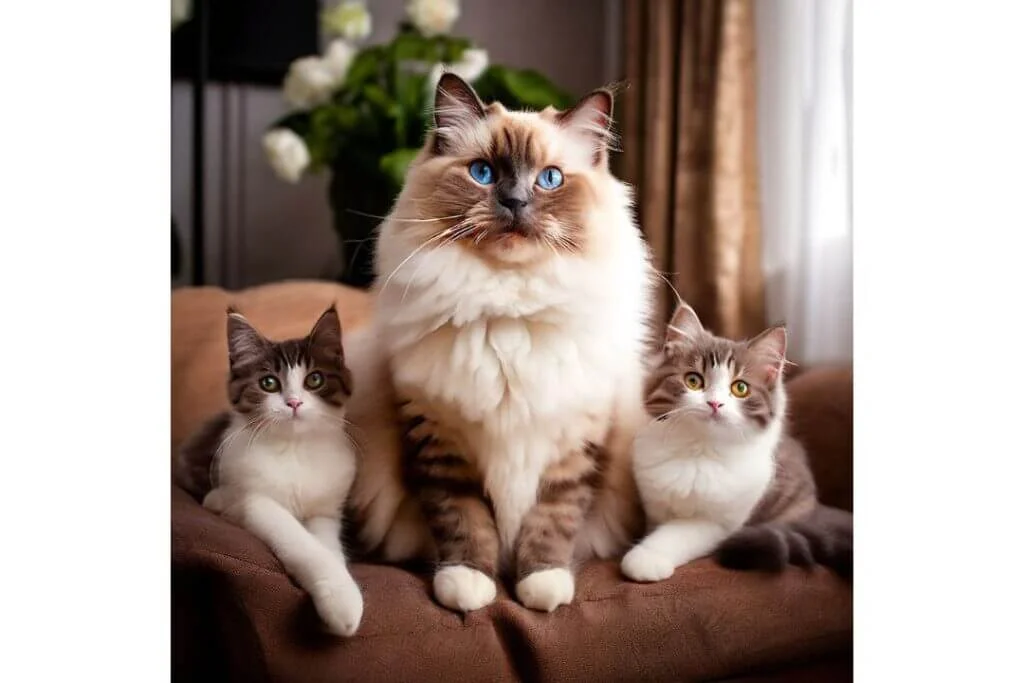
Socializing with Humans
Ragdolls are social cats that thrive on human interaction. They enjoy being part of family activities and require plenty of attention and affection to remain happy and healthy.
Noise Levels
Vocalization Habits
Ragdolls are known for their vocalization. They often communicate with soft, sweet meows, but they can also be quite vocal when seeking attention or expressing discomfort.
Potential for Being Loud
While not as loud as some breeds, Ragdolls can still be quite vocal. Potential owners should be prepared for a cat that likes to communicate and may be louder than expected.
Destructive Behavior
Clawing and Scratching Furniture
Like all cats, Ragdolls have a natural instinct to scratch. Without proper outlets for this behavior, they may claw furniture and other household items. Providing scratching posts and regular nail trims can help mitigate this issue.
Other Destructive Tendencies
Ragdolls can sometimes engage in other destructive behaviors, especially if they are bored or anxious. Providing plenty of toys, mental stimulation, and interactive playtime can help reduce these tendencies.
Ragdoll Lifespan
Average Lifespan
Ragdolls typically live between 12 to 17 years. However, their lifespan can be affected by their overall health, diet, and level of care they receive throughout their lives.
Considerations for Aging Cats
As Ragdolls age, they may develop additional health issues such as arthritis, kidney disease, and dental problems. Regular veterinary care and adjustments to their diet and lifestyle can help manage these issues and ensure a good quality of life in their senior years.
Conclusion: Bad Things About Ragdoll Cats
Owning a Ragdoll cat is a rewarding experience filled with affection and companionship, but it also comes with its own set of challenges. Ragdolls are known for their gentle and friendly disposition, which makes them wonderful pets, especially for families and individuals seeking a loyal companion. However, potential owners must be prepared to handle their specific health issues, such as heart and urinary problems, and commit to their high maintenance needs, including regular grooming and attention to their diet and exercise.
Furthermore, Ragdolls can exhibit behavioral problems if not properly socialized or if left alone for extended periods. The costs associated with their care, from veterinary bills to grooming supplies, can be significant. Despite these challenges, with the right care, attention, and commitment, Ragdolls can become cherished members of the family, providing years of love and joy.
FAQs
Are Ragdoll cats good for first-time cat owners?
Ragdoll cats can be a good choice for first-time cat owners, provided they are ready to meet the breed’s high maintenance needs and address potential health issues. Ragdolls are known for their friendly and docile nature, making them relatively easy to manage for those willing to learn and commit to their care. First-time owners should educate themselves about the breed’s specific requirements to ensure they provide a loving and healthy environment for their new pet.
How do I manage a Ragdoll’s shedding?
Managing a Ragdoll’s shedding involves a regular grooming routine. Daily brushing is recommended to reduce the amount of loose fur and prevent matting. Investing in high-quality grooming tools, such as a slicker brush and a comb, can make the process more effective. Additionally, maintaining a consistent grooming schedule helps keep your Ragdoll’s coat healthy and reduces shedding around the home.
Can Ragdoll cats be left alone?
Ragdoll cats are social animals and do not thrive when left alone for long periods. They can develop separation anxiety if frequently left without companionship. To mitigate this, consider providing interactive toys and puzzles to keep them occupied. Some owners find that having another pet as a companion can help reduce feelings of loneliness in their Ragdoll. Ensuring they have plenty of interaction and playtime when you are home is also crucial.
What should I feed my Ragdoll cat?
A balanced, high-quality diet is essential for the health of a Ragdoll cat. Protein-rich foods are particularly important for maintaining their muscle mass and overall health. It’s advisable to consult with your veterinarian to determine the best diet for your specific cat, considering factors like age, weight, and any health concerns. Be mindful of portion sizes to avoid overfeeding, as Ragdolls can be prone to obesity.
How do I keep my Ragdoll cat healthy?
Keeping a Ragdoll cat healthy involves regular veterinary check-ups, a nutritious diet, and ample exercise. Routine vet visits help catch and address health issues early. Providing a balanced diet tailored to their needs ensures they receive the necessary nutrients. Regular grooming is also important to prevent skin and coat problems. Additionally, engaging your Ragdoll in play and physical activities helps maintain their physical and mental well-being. Monitoring for any signs of illness and addressing them promptly can contribute to a long, healthy life for your Ragdoll.

